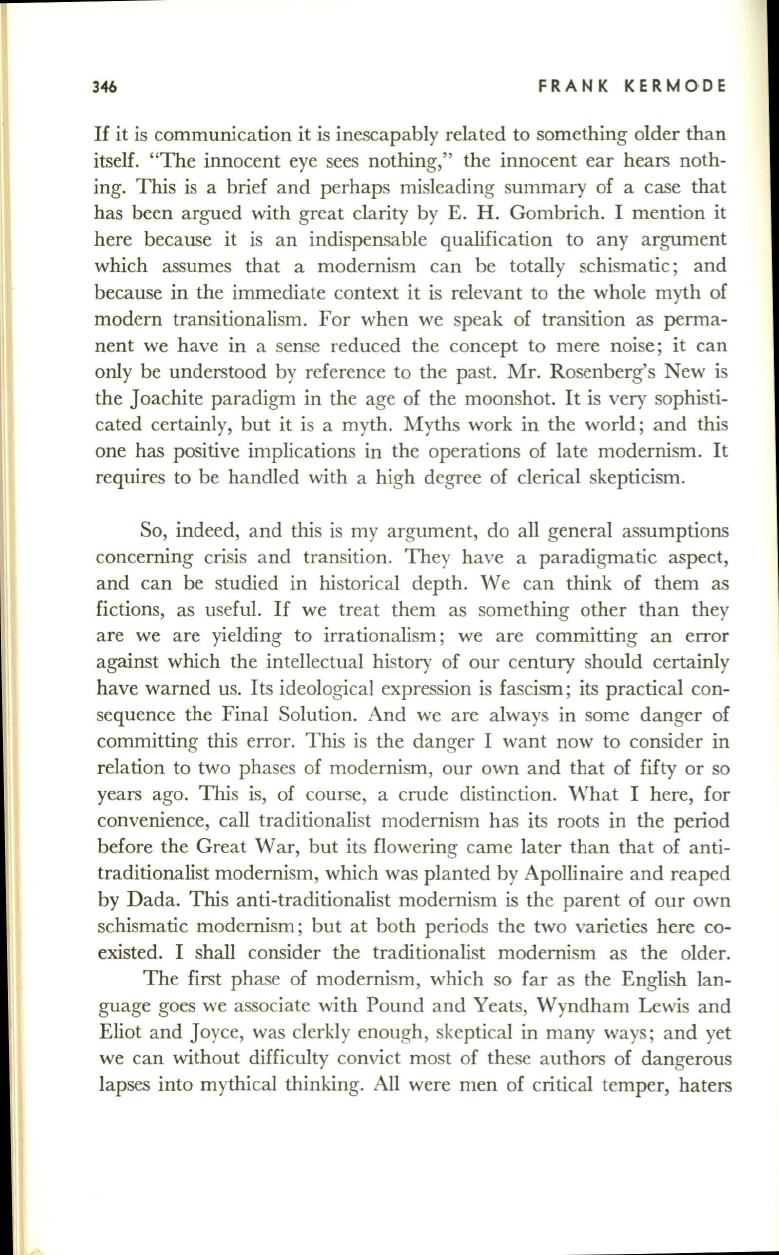
346
FRANK KERMODE
If
it is communication it is inescapably related to something older than
itself. "The innocent eye sees nothing," the innocent ear hears noth–
ing. This is a brief and perhaps misleading summary of a case that
has been argued with great clarity by E. H. Gombrich. I mention it
here because it is an indispensable qualification to any argument
which assumes that a modernism can be totally schismatic; and
because in the immediate context it is relevant to the whole myth of
modern transitionalism. For when we speak of transition as perma–
nent we have in a sense reduced the concept to mere noise; it can
only be understood by reference to the past. Mr. Rosenberg's New is
the Joachite paradigm in the age of the moonshot.
It
is very sophisti–
cated certainly, but it is a myth. Myths work in the world; and this
one has positive implications in the operations of late modernism.
It
requires to be handled with a high degree of clerical skepticism.
So, indeed, and this is my argument, do all general assumptions
concerning crisis and transition. They have a paradigmatic aspect,
and can be studied in historical depth. We can think of them as
fictions, as useful.
If
we treat them as something other than they
are we are yielding to irrationalism; we are committing an error
against which the intellectual history of our century should certainly
have warned us. Its ideological expression is fascism; its practical con–
sequence the Final Solution. And we are always in some danger of
committing this error. This is the danger I want now to consider in
relation to two phases of modernism, our own and that of fifty or so
years ago. This is, of course, a crude distinction. What I here, for
convenience, call traditionalist modernism has its roots in the period
before the Great War, but its flowering came later than that of anti–
traditionalist modernism, which was planted by Apollinaire and reaped
by Dada. This anti-traditionalist modernism is the parent of our own
schismatic modernism; but at both periods the two varieties here co–
existed. I shall consider the traditionalist modernism as the older.
The first phase of modernism, which so far as the English lan–
guage goes we associate with Pound and Yeats, Wyndham Lewis and
Eliot and Joyce, was clerkly enough, skeptical in many ways; and yet
we can without difficulty convict most of these authors of dangerous
lapses into mythical thinking. All were men of critical temper, haters


